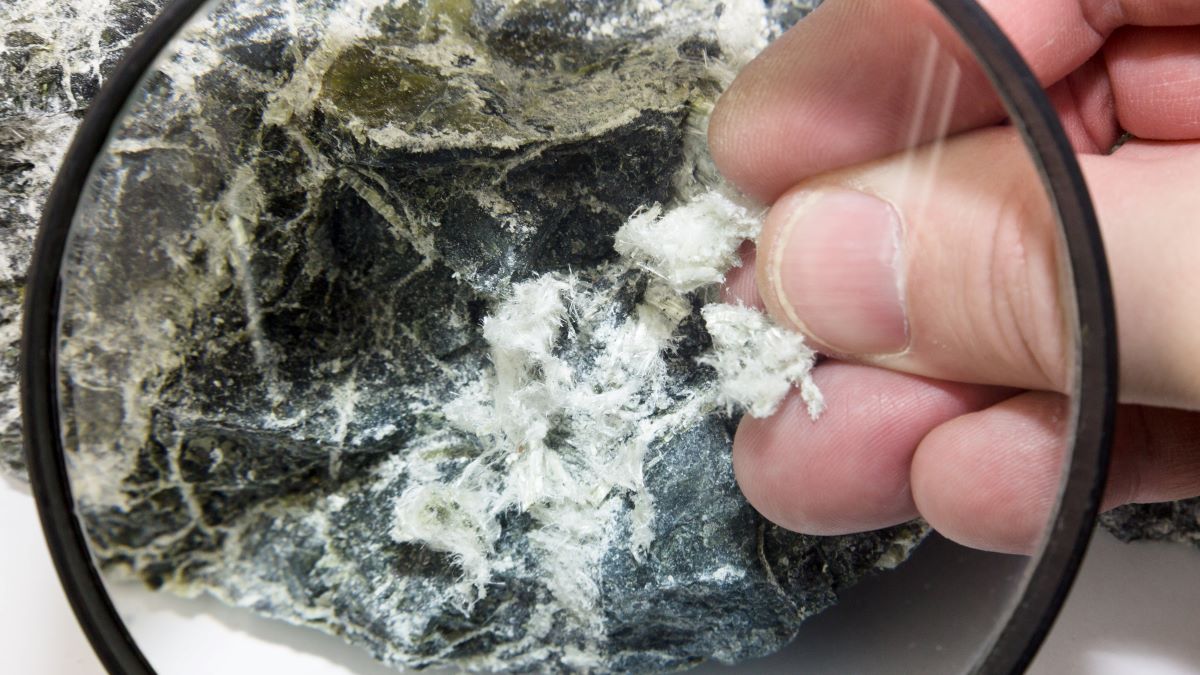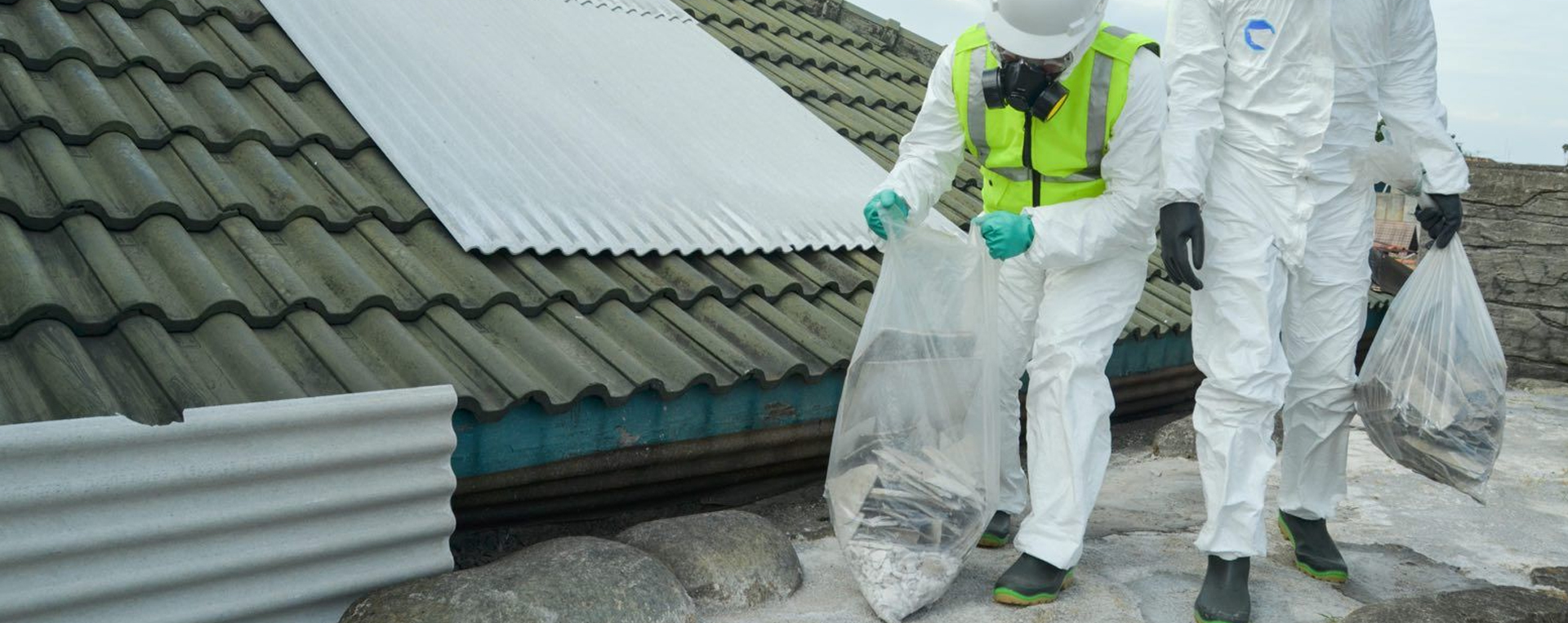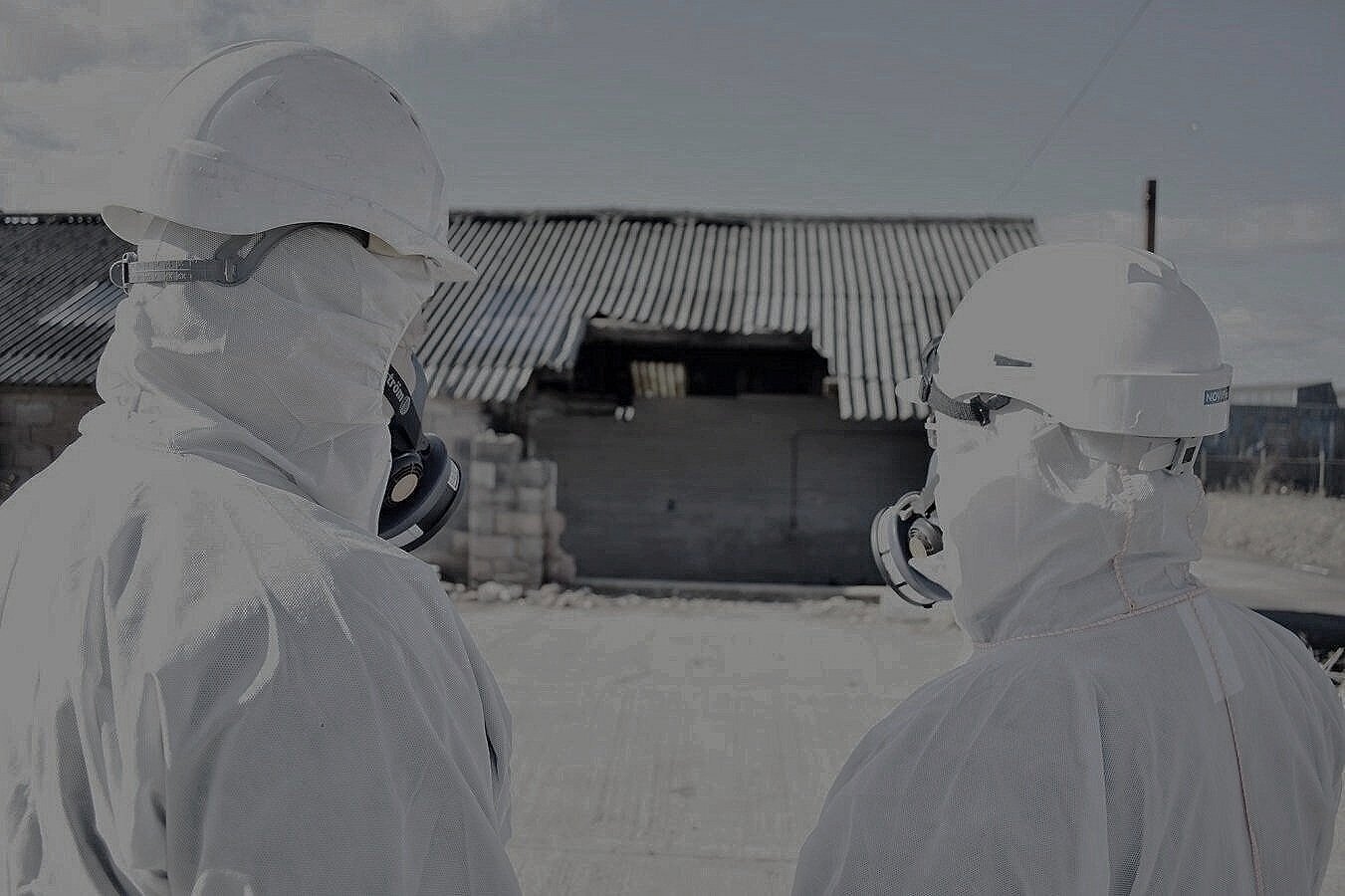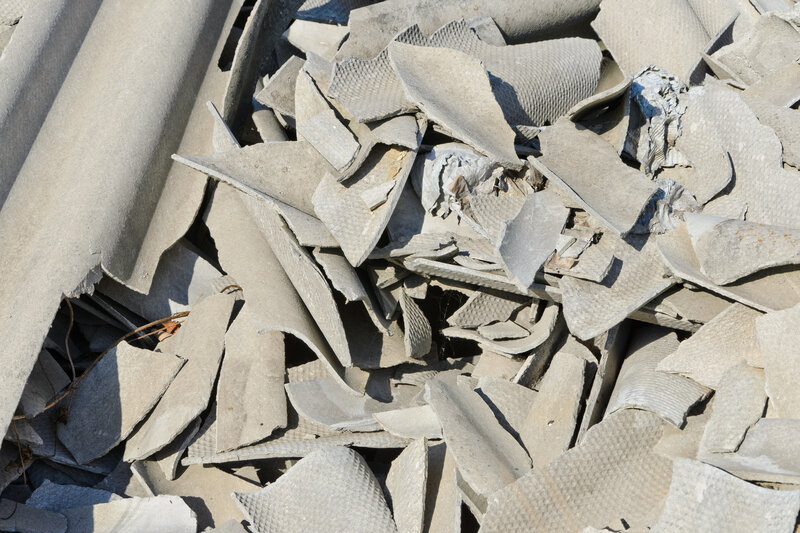Asbestos removal requires a nuanced understanding of risks, legal regulations, and necessary safety precautions.
If you’re considering DIY asbestos removal, acknowledge the complexity and potential hazards involved in the process.
There is substantial importance in comprehending each step; removal requires precision, a thorough plan, and knowledge of proper disposal methods.
Understanding Asbestos Risks
At its core, understanding asbestos risks involves recognising its historical use, current dangers, and the paramount importance of ensuring public and personal safety throughout all interactions.
Asbestos materials tend to deteriorate over time, increasing potential exposure hazards.
Thus, recognising situations where the material might become airborne is crucial in managing risks effectively.
Speaking candidly, asbestos fibres pose significant health threats, notably mesothelioma and lung cancer, both of which are life-threatening.
These risks demand thorough exploration and consideration when contemplating any activity that might disturb asbestos-containing materials, especially DIY removal.
Ultimately, the key lies in education; knowing the potential for exposure saves lives. Empowering oneself with knowledge ensures not only regulatory compliance but also the utmost protection for all involved.

Identifying Asbestos Materials
The first step in addressing asbestos safely is identifying the presence of these hazardous materials within your environment.
In the United Kingdom, asbestos was widely used in construction from the 1950s until the late 1990s, featuring in products such as pipe insulation, floor tiles, and roofing materials. It is important to note that not all older materials contain asbestos, but many do.
Distinguishing asbestos materials can be tricky as they often appear similar to non-asbestos products. Thus, it’s not always obvious when something might harbour this dangerous substance. Asbestos can be found in textured coatings, insulating boards, and even certain household appliances.
To determine the presence of asbestos accurately, professional inspection and testing by accredited laboratories are recommended. These experts have the tools and expertise to ensure an accurate and safe identification process, significantly reducing potential risks.
Attempting to identify asbestos on your own can be perilous without proper knowledge and equipment, underscoring the importance of professional assistance.
DIY Asbestos Removal: Is It Legal?
One must tread carefully with asbestos removal.
In the United Kingdom, the legal landscape around asbestos is precisely regulated. The Health and Safety Executive (HSE) sets rigorous guidelines to ensure safe handling, removal, and disposal of asbestos materials, with the intent of mitigating health hazards. Typically, only trained professionals are permitted to undertake such tasks.
DIY asbestos removal is not generally endorsed.
The legal aspect of removal depends on – not just the presence of asbestos – but the nature and condition of the material involved. While some non-licensed work might be legally permissible, regulations stipulate strict adherence to safety protocols.
Aspiring DIY enthusiasts must realise that removing asbestos involves not only potential health risks but also compliance with stringent legal standards. Failing to follow these can lead to severe penalties and long-lasting consequences. Embrace the wisdom of engaging with professional licensed contractors for such a perilous endeavour.
Safety Precautions for DIY Removal
The essence of safety is crucial when confronting the challenges of asbestos removal. This intricate task demands awareness and meticulous adherence to preventive measures outlined by regulatory authorities.
In 2023, the Health and Safety Executive emphasised the importance of understanding potential hazards and mandatory protective equipment. Equip yourself with personal protective equipment (PPE) such as disposable overalls, gloves, and a suitable dust mask. These items are essential to safeguard against inhaling dangerous fibres that can cause severe health problems.
Moreover, it’s vital to contain the area by sealing it off with plastic sheeting and using appropriate warning notices. This step ensures that asbestos dust does not spread to other parts of your home, minimising exposure risk to your family and your environment. Always keep the area well-ventilated to aid in naturally dispersing any loose fibres.
Before embarking on any removal, ensure that you keep asbestos materials damp to prevent dust from becoming airborne. Utilising a wetting agent can effectively reduce dust, enhancing your safety initiatives. Adopting these precautionary steps ensures a safer working environment that aligns with regulatory compliance.
These invaluable safeguards only take a moment to implement, significantly reducing potential dangers whilst fostering peace of mind. Integrate them faithfully to protect oneself and the surrounding environment.

Required Protective Gear
Embarking on a DIY asbestos removal journey necessitates the utmost attention to protective gear, which is your first line of defence.
A well-fitting, high-quality mask equipped with P3 filters is non-negotiable.
Further, you will need protective clothing, such as a disposable coverall that features fitted cuffs and a hood. These garments should be specifically designed to prevent fibres from attaching, thus safeguarding the wearer’s clothes, skin, and respiratory system.
Additionally, utilising sturdy gloves, goggles, and protective footwear will complete your armour against exposure. This comprehensive assembly of gear not only shields you from asbestos risks but also exemplifies your commitment to personal and environmental safety. Remember, taking these measures represents “best practice” in DIY asbestos removal, ensuring a safer and more effective process.
Tools for Safe Asbestos Handling
Embarking on a DIY asbestos removal project requires not only courage but also a precise set of specialised tools. Equipped with the right arsenal, one can approach the task with confidence and meticulous attention to detail.
Begin with a high-efficiency particulate air (HEPA) vacuum. This helps to capture even the finest asbestos fibres.
In addition, ensure you have heavy-duty plastic sheeting and duct tape on hand to encapsulate affected areas and limit air exposure.
Fibre dampening spray is another essential, aiding in containing dust and preventing it from becoming airborne.
You’ll also require a good-quality scraper and putty knives to carefully remove asbestos materials. These tools are instrumental for achieving a clean result without releasing fibres into the environment.
Ultimately, having the right tools isn’t merely about efficiency; it embodies a proactive stance towards ensuring safety. Proper tools paired with informed execution will guide you through this challenging yet achievable endeavour.
Step-by-Step Removal Guide
Embarking on this endeavour necessitates a meticulous approach, underpinned by stringent safety protocols, where each step matters. Commence by donning personal protective equipment, including respirators and disposable coveralls, to shield against harmful exposure during the removal process.
Create a containment area by sealing off spaces with durable plastic sheeting, ensuring no gaps allow asbestos to escape. Begin to dampen the asbestos material using a fibre dampening spray, effectively minimising airborne particles. Subsequently, use a combination of scrapers and putty knives to gently and steadily remove asbestos material, placing it into asbestos waste bags immediately. Throughout, maintain a calm, steady pace; this is pivotal to ensure safety and precision in execution.
Preparation and Workspace Setup
The cornerstone of safe asbestos removal lies in diligent preparation—ensuring workspace setup meets exceptional safety standards.
Effective preparation and containment can reduce airborne asbestos levels by up to 80%.
Prepare your space meticulously by securing the surroundings with heavy-duty plastic sheeting, ensuring every nook and cranny is tightly sealed. This not only contains any disturbed asbestos particles but also shields adjacent areas from contamination. Ensure adequate ventilation in the workspace where feasible, while maintaining strict control over air circulation.
Secure essential safety equipment—such as high-quality HEPA-filtered respirators, durable gloves, protective clothing, and disposal bags—positioning them for easy access. Visual reminders and checklists can enhance focus, keeping the team knitted into a seamless workflow dedicated to maintaining the highest safety vigilance.
Safe Removal Techniques
Approaching asbestos removal safely requires understanding and mastering specific techniques to protect oneself and others.
First and foremost, before embarking on a DIY asbestos removal journey, it is imperative to familiarise oneself with local and national regulations, which often require notifying authorities of such activities. These regulations are crafted to minimise health risks and ensure appropriate disposal of hazardous material. Non-compliance can lead to severe legal consequences and health risks, undermining your commendable efforts at safety.
Additionally, wet methods are a cornerstone technique for limiting fibre release. By saturating materials with a fine mist of water, the potential for airborne particles is greatly reduced, thus mitigating inhalation risks. Seal off all entry points with suitable barriers to prevent fibre escape beyond the controlled work zone.
Finally, sharp attention to detail involves meticulously containing and disposing of asbestos waste following strict guidelines. Use heavyweight, double-bagged containers clearly marked with the necessary hazard symbols. This meticulous approach ensures that waste is transported and disposed of safely, aligning your commendable DIY ethos with the broader mission of public health protection.
Proper Disposal Methods
The proper disposal of asbestos materials safeguards both the environment and public health, requiring precision and compliance with legal mandates.
- Seal and Bag: Securely double-bag asbestos waste using heavy-duty plastic bags. Ensure that each bag is clearly marked with asbestos hazard warnings.
- Label Clearly: Make sure all containers are marked with the appropriate asbestos warning labels to avoid mishandling during transportation.
- Transport Safely: Use a licensed asbestos waste carrier for transporting the waste to an authorised disposal facility, complying with local regulations.
- Dispose at Approved Sites: Deliver the waste to designated asbestos disposal facilities that are equipped to handle such hazardous materials safely.
- Maintain Records: Keep detailed records of the disposal process including receipts and waste consignment notes for regulatory compliance.
Adhering to these methods ensures the protection of both the public and the integrity of your asbestos removal initiative.
Ultimately, the safe disposal of asbestos aligns with a commitment to environmental stewardship and contributes positively to community well-being.
Professional Asbestos Removal
Engaging a professional asbestos removal service is often the safest and most reliable option for handling asbestos-related issues.
These experts, certified to execute a meticulous removal process, bring extensive experience, ensuring compliance with stringent health and safety regulations. Their thorough assessments and strategic planning offer peace of mind, knowing every possible measure is taken to minimise environmental risks.
Furthermore, the specialists employ state-of-the-art equipment to handle the process efficiently. By entrusting these professionals, individuals are safeguarded from the hazardous exposure risks associated with asbestos, ensuring a safer environment for all concerned.
In addition, the comprehensive service extends beyond removal to include detailed waste management and disposal. This diligent adherence to protocol and regulation not only guarantees legal compliance but also promotes sustainable practices. By choosing professional asbestos removal services, one embraces a future that prioritises safety, legality, and environmental consciousness.
Costs of Professional Services
Considering professional services is crucial.
The expenses involved with hiring experts for asbestos removal can vary widely. The total cost largely hinges on both the scale and complexity of the task at hand, as well as the reputation of the company chosen. Additionally, factors such as the location of the property and the accessibility of asbestos-containing materials can also impact pricing significantly.
Competent professionals adhere to all regulations.
While an initial assessment might carry a price tag, the holistic advantage lies in avoiding the potentially astronomical costs of improperly managed asbestos removal – which may include legal penalties or health-related consequences that could arise later.
Ultimately, investing in a highly skilled asbestos removal service is an investment in your long-term well-being. It ensures the safety of the environment and those residing within it, aligned with the peace of mind that all measures have been taken in accordance with the latest health standards. Indeed, as experts in their field, these professionals often surpass expectations, embodying excellence in every aspect of their work.

Comparing DIY vs Professional Removal
Considering the gravitas of handling asbestos, one must carefully weigh the benefits between DIY and professional removal. Both avenues present distinct advantages and challenges, and each has implications for safety and compliance with regulations.
Professional services have trained experts, certified by regulatory bodies. They follow established protocols with access to specialised equipment for thorough, effective removal. Their expertise minimises risks associated with exposure and disposal, ensuring the highest standards are met.
While DIY may offer initial cost savings, it demands an exceptional level of vigilance, research, and adherence to safety measures, requiring access to PPE and disposal services. It’s a path best suited for those with relevant knowledge and unwavering commitment to safety.
When faced with the decision, remember that professional removal promises peace of mind. It brings the assurance that skills hard-earned and tested in the field are applied, vastly mitigating risks of inadvertent exposure or non-compliance. As the saying goes, “Preparation is the key to success,” especially in treacherous terrains like asbestos handling.
Health Implications of Asbestos Exposure
Asbestos, albeit a once celebrated material, harbours profound health risks that cannot be overstated and must be understood with clarity.
Exposure to asbestos can manifest as a formidable health challenge and cause long-term ailments, notably affecting the respiratory system. Inhaling fibres can result in asbestosis, a chronic condition escalating to fibrous lung tissues, and elevate the risks of severe diseases such as lung cancer and mesothelioma, latency for which spans decades.
Indeed, few substances pose such a significant threat from seemingly minimal exposure. The tiny fibres, once airborne, become nearly invisible and are easily inhaled without notice, dwelling insidiously in the lungs while preparing their harbingers of disease after extended dormancy.
These potential outcomes underscore the crucial importance of informed decision-making and adherence to stringent safety practices whenever asbestos is present. For individuals contemplating asbestos removal, it is paramount to recognise the health stakes involved and weigh professional removal’s immediate safety assurances against the perilous ramifications of mishandled DIY endeavours. Knowledge is your greatest ally, and there is no compromise in safeguarding health.
Legal Responsibilities and Regulations
Embarking on a DIY asbestos removal project demands a keen understanding of your legal responsibilities. In the United Kingdom, regulations surrounding asbestos are stringent, reflecting a conscious societal commitment to safety.
Local authorities enforce these regulations diligently. This ensures that your well-being, and that of your community, are safeguarded at all times.
In England, notable guidelines derive from the Control of Asbestos Regulations 2012, providing both clarity and strict instructions.
These rules exist to mitigate any exposure risks associated with removal activities. Additionally, they mandate the use of approved methods and materials to contain asbestos fibres.
Failing to adhere to these regulations could incur substantial penalties, underscoring how critical compliance is. Engaging with experts and consulting authoritative resources can guide you through safe and lawful practices.
Ultimately, you must consider whether the risk is yours to undertake. Professional services possess nuanced expertise, enabling adherence to legal standards seamlessly. For more commonly asked questions regarding asbestos removal visit here.
When to Seek Expert Help
Navigating the complexities of asbestos removal can often necessitate the expertise of trained professionals.
In 2016, an alarming incident in a private residence highlighted the dangers of improper handling. This scenario serves as a compelling reminder of the inherent risks, and underscores the importance of professional intervention.
Particularly in buildings built before the year 2000, unmanaged asbestos may still reside in various materials. Knowing when and where asbestos is present can be challenging without the precise detection and handling techniques possessed by certified experts.
Moreover, when the scale of the project is significant, or when you’re uncertain about the presence of asbestos, it’s prudent to call upon the profound skill set of professionals. They bring both specialised equipment and comprehensive insurance, ensuring the safest removal process possible.
Enlisting expert help is a strategic decision that prioritises safety and compliance with regulations.

